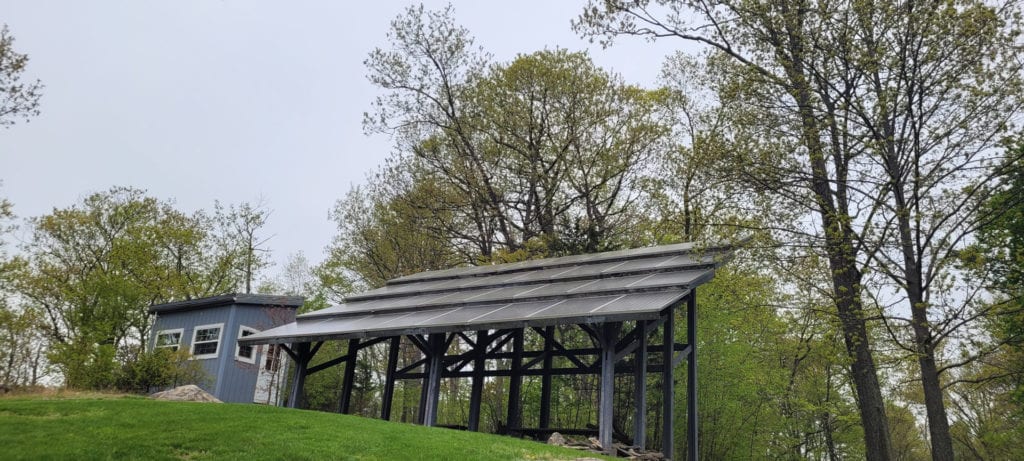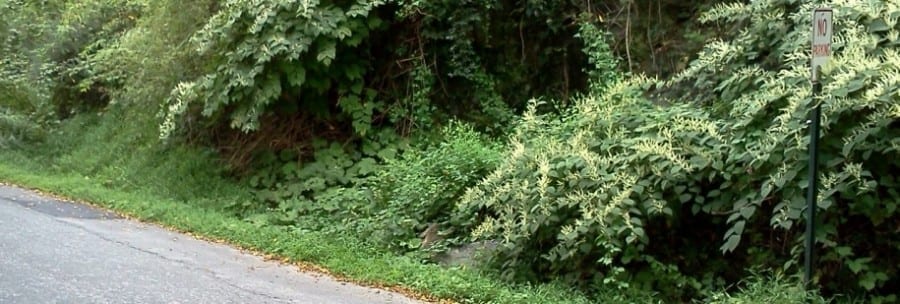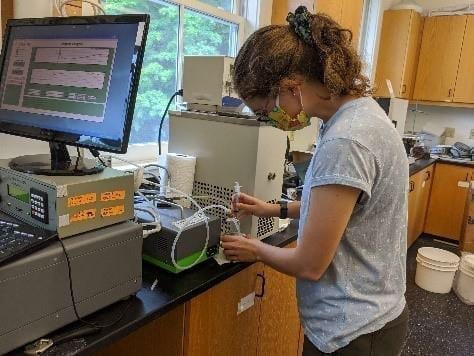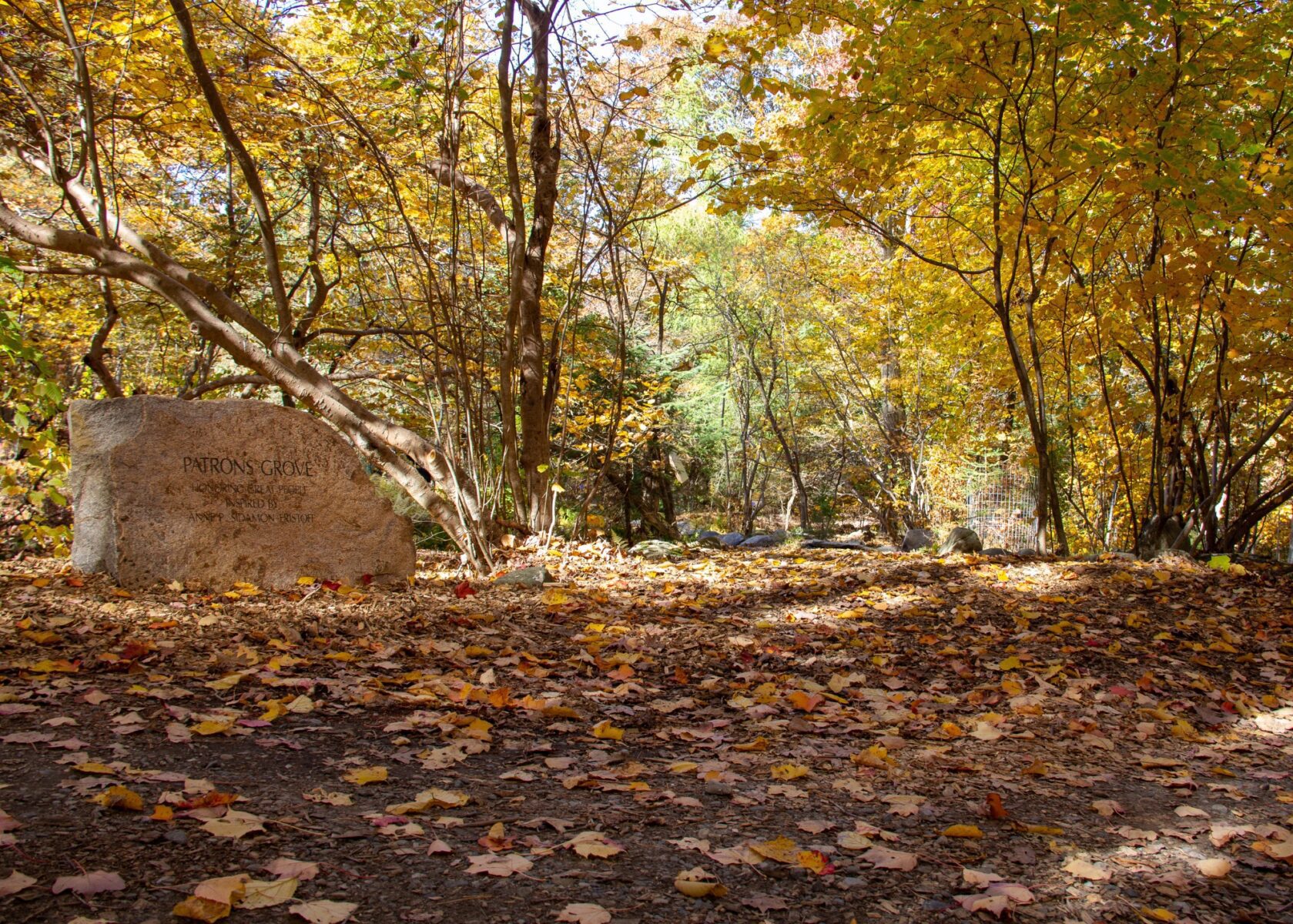
Wildlife Corridor
Black Rock Forest and its partners in corridor preservation, including the Open Space Institute, ...
As an intact, mature deciduous forest dominated by native species, Black Rock Forest represents an increasingly rare natural resource. It retains high habitat and species diversity, including populations of rare and endangered plants and animals. The Forest and surrounding Highlands provide critical refuge for mammals with large home ranges, like the bobcat, coyote, otter, and black bear, as well as severely at-risk forest interior birds like the cerulean warbler. To increase protection for the 160+ bird species residing in Black Rock Forest, the organization has applied for designation of the Forest and immediate surroundings as an Audubon Important Bird Area (IBA).
Black Rock Forest’s conservation goals include translating research knowledge into models for better management of natural resources, promoting ecological connectivity, developing management plans for threatened species and problematic invasive species, and managing human activity to minimize adverse impacts and enhance safety.
Black Rock Forest is working with partners to secure critical portions of a wildlife corridor connecting thousands of acres of habitat in the Hudson Highlands. A key acquisition in 2013 by our project partner, the Open Space Institute, resulted in the conservation of Legacy Ridge, a 700-acre parcel between Black Rock Forest and Schunnemunk Mountain State Park that had been slated for development, but is now under permanent conservation easement. Please see Wildlife Corridor for project details.
The organization’s Forest Management Plan was developed in the early 2000s in consultation with the New York State Department of Environmental Conservation. It is guided by ecological principles and the findings of prior research in Black Rock Forest and the region. The Cornwall community supports the plan, which involves dedicated volunteers from the Black Rock Fish and Game Club and the New York-New Jersey Trail Conference, who contribute to safety patrol and trail maintenance, respectively.
Since 2013, Black Rock Forest staff have documented renewed regeneration of native tree species, including birches, maples, and oaks, saplings of which had been absent from the forest understory due to deer overbrowsing. Successful tree regeneration is a welcome outcome of BRF’s ecosystem management in a region that has experienced decades of overabundant deer populations and associated decimation of the understory, key plant species, and habitat for other native animals.
The Forest’s ecosystem management program includes a highly regulated deer hunting program as a tool to keep the deer population within a range that prevents over-browsing, allow forest trees to regenerate, and conserve biodiversity in the understory. Our management strategies support native wildlife, including many threatened bird populations that reside in Black Rock Forest year-round or during breeding season. Black Rock Fish and Game Club has an exclusive license agreement to hunt deer in Black Rock Forest under guidelines set by the Forest Manager. Hunters are required to check in/out and to bring harvested deer to the check stations where Forest staff collect data and monitor this sample of the deer population.
Join us in April as we conduct citizen-science volunteer days to do our annual deer pellet count survey. The survey allows us to estimate the size of the deer population and monitor our deer density annually. For more information on volunteering, please visit our website volunteer page. Questions: please email info@blackrockforest.org

Black Rock Forest and its partners in corridor preservation, including the Open Space Institute, ...

Sustainable Technology Black Rock Forest made a significant commitment to sustainable technology in the ...

Black Rock Forest is connected to and initiates action within regional conservation networks that ...

Grants of up to $6000 will be awarded on a competitive basis to fund ...

Established in 2020 in honor of Anne P. Sidamon-Eristoff, a founding BRF Board member, ...
| Cookie | Duration | Description |
|---|---|---|
| cookielawinfo-checkbox-analytics | 11 months | This cookie is set by GDPR Cookie Consent plugin. The cookie is used to store the user consent for the cookies in the category "Analytics". |
| cookielawinfo-checkbox-functional | 11 months | The cookie is set by GDPR cookie consent to record the user consent for the cookies in the category "Functional". |
| cookielawinfo-checkbox-necessary | 11 months | This cookie is set by GDPR Cookie Consent plugin. The cookies is used to store the user consent for the cookies in the category "Necessary". |
| cookielawinfo-checkbox-others | 11 months | This cookie is set by GDPR Cookie Consent plugin. The cookie is used to store the user consent for the cookies in the category "Other. |
| cookielawinfo-checkbox-performance | 11 months | This cookie is set by GDPR Cookie Consent plugin. The cookie is used to store the user consent for the cookies in the category "Performance". |
| viewed_cookie_policy | 11 months | The cookie is set by the GDPR Cookie Consent plugin and is used to store whether or not user has consented to the use of cookies. It does not store any personal data. |